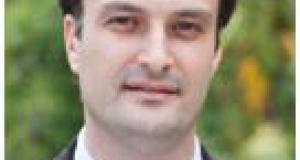
STEFANO PAMPANIN
Email:
stefano.pampanin@uniroma1.it
Structure:
Dipartimento di INGEGNERIA STRUTTURALE E GEOTECNICA
SSD:
CEAR-07/A
Notizie
NEW! (@ 21 September 2024 )
Corso "A.A.2024/2025 Structural and Seeismic Assessment and Retrofit of Reinforced Concrete Buildings "
Codice corso : oszuwar
Clasroom Course Link: https://classroom.google.com/c/NzE3ODU5ODg0NzY3?cjc=oszuwar
Insegnamenti
| Codice insegnamento | Insegnamento | Anno | Semestre | Lingua | Corso | Codice corso | Curriculum |
|---|---|---|---|---|---|---|---|
| 10612536 | SEISMIC DESIGN OF PRECAST CONCRETE AND LAMINATED TIMBER BUILDINGS | 2º | 2º | ITA | Ingegneria Civile | 33487 | Ingegneria Civile (percorso valido anche ai fini del conseguimento del doppio titolo italo-francese e italo-spagnolo) |
| 10612533 | STRUCTURAL AND SEISMIC ASSESSMENT AND RETROFIT STRATEGIES FOR EXISTING REINFORCED CONCRETE BUILDINGS | 2º | 1º | ITA | Ingegneria Civile | 33487 | Ingegneria Civile (percorso valido anche ai fini del conseguimento del doppio titolo italo-francese e italo-spagnolo) |
| 1047242 | ELEMENTI DI DINAMICA DELLE STRUTTURE E COSTRUZIONI ANTISISMICHE - COSTRUZIONI ANTISISMICHE | 5º | 2º | ITA | Ingegneria edile-architettura | 33470 | Curriculum unico |
